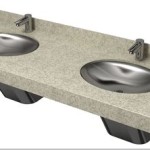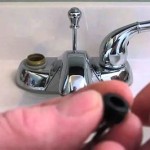How To Prepare Bathroom Walls For Tiling
Preparing bathroom walls for tiling is a crucial step in any bathroom renovation project. A properly prepared surface ensures the tiles adhere correctly, preventing future problems such as loose tiles, water damage, and mold growth. The process involves a series of steps designed to create a clean, level, and stable substrate for the tile adhesive to bond to. Skipping or skimping on preparation can lead to costly repairs down the line. This article details the necessary steps to prepare bathroom walls for tiling, ensuring a long-lasting and aesthetically pleasing result.
Understanding the Importance of Proper Preparation
The success of a tiling project hinges on the quality of the preparation. Tile adhesive requires a suitable surface to create a strong bond. An unprepared or poorly prepared surface can lead to several complications. For example, if the wall is uneven, the tiles will not lay flat, creating an unsightly and potentially dangerous surface. Similarly, if the wall is dirty or dusty, the adhesive will bond to the dirt rather than the wall, leading to tile failure. Moisture is another critical factor. Bathrooms are inherently damp environments, and moisture can penetrate improperly prepared walls, causing damage to the underlying structure and promoting mold growth. Thorough preparation addresses these issues, creating a stable and waterproof foundation for the tiles.
Furthermore, proper preparation ensures the longevity of the tiling installation. A well-prepared surface minimizes the stress on the tiles and adhesive, preventing cracking, chipping, and other forms of damage. It also allows for easier maintenance and cleaning, as the tiles are securely bonded and less susceptible to water penetration. Investing time and effort in preparing the walls is a worthwhile investment that pays off in the long run by reducing the need for future repairs and replacements.
Essential Tools and Materials
Before beginning the preparation process, it is essential to gather the necessary tools and materials. Having everything on hand will streamline the work and ensure a more efficient workflow. A basic toolkit should include:
*Safety Glasses and Dust Mask: Protect the eyes and lungs from dust and debris.
*Gloves: Protect the hands from chemicals and sharp objects.
*Scraper: For removing wallpaper, old adhesive, and loose paint.
*Utility Knife: For scoring wallpaper or cutting drywall.
*Sponge and Bucket: For cleaning the walls.
*Sugar Soap or TSP (Trisodium Phosphate): For degreasing and cleaning the walls.
*Tape Measure: For accurate measurements.
*Level: For checking the walls for plumb and levelness.
*Straight Edge: For identifying uneven areas.
*Pencil: For marking areas that need repair.
*Drywall Knife or Taping Knife: For applying joint compound.
*Joint Compound: For filling holes and repairing imperfections.
*Sandpaper (various grits): For smoothing surfaces.
*Primer (suitable for bathroom environments): For sealing the walls and promoting adhesion.
*Waterproof Membrane (optional but recommended): For adding an extra layer of protection against moisture.
*Notched Trowel: If applying a waterproof membrane.
The specific materials required may vary depending on the existing wall surface and the type of tile being installed. It is always advisable to consult with a tiling professional or refer to the tile manufacturer's recommendations for specific product requirements.
Step-by-Step Guide to Preparing Bathroom Walls
The preparation process involves several key steps, each designed to address specific issues and create an optimal surface for tiling.
1. Remove Existing Fixtures and Coverings: Begin by removing any existing fixtures, such as towel rails, soap dishes, and mirrors. Turn off the water supply to the toilet and remove it, if necessary. Remove any existing wallpaper, paint, or old tiles. Wallpaper can be removed by scoring it with a utility knife and then soaking it with warm water and a wallpaper removal solution. Old paint can be scraped off with a scraper or sanded down. Old tiles can be removed with a hammer and chisel.
2. Clean the Walls Thoroughly: Once the existing coverings are removed, clean the walls thoroughly with sugar soap or TSP. This will remove any grease, grime, and mildew. Rinse the walls with clean water and allow them to dry completely. This step is crucial for ensuring proper adhesion of the tile adhesive.
3. Inspect the Walls for Damage: Carefully inspect the walls for any signs of damage, such as cracks, holes, or water damage. Use a level and straight edge to check for unevenness. Mark any areas that need repair with a pencil.
4. Repair Any Damage: Repair any cracks, holes, or unevenness in the walls. Small cracks and holes can be filled with joint compound. Apply the joint compound with a drywall knife or taping knife, feathering the edges to blend it with the surrounding surface. For larger holes, you may need to install a drywall patch before applying the joint compound. Allow the joint compound to dry completely and then sand it smooth with sandpaper. If the walls are severely uneven, you may need to install new drywall or apply a leveling compound.
5. Sand the Walls: Once the repairs are complete, sand the entire surface of the walls to create a smooth and even surface. Use a medium-grit sandpaper to remove any rough spots or imperfections. Then, use a fine-grit sandpaper to create a smooth finish. Wipe the walls down with a damp cloth to remove any sanding dust.
6. Apply Primer: Apply a primer that is specifically designed for bathroom environments. This will seal the walls, prevent moisture penetration, and promote adhesion of the tile adhesive. Follow the manufacturer's instructions for application. Allow the primer to dry completely before proceeding to the next step.
7. Apply Waterproof Membrane (Optional but Recommended): For added protection against moisture, apply a waterproof membrane to the walls. This is especially important in areas that are frequently exposed to water, such as the shower area. There are various types of waterproof membranes available, including liquid membranes and sheet membranes. Each type has its own application instructions, so be sure to follow the manufacturer's recommendations. Liquid membranes are typically applied in multiple coats with a notched trowel. Sheet membranes are typically applied with a special adhesive.
8. Check for Plumb and Level Again: After applying the primer and waterproof membrane, check the walls for plumb and level again. Make any necessary adjustments before proceeding with tiling.
9. Layout the Tiles: Before applying the tile adhesive, lay out the tiles on the floor to plan the layout. This will help you determine the best placement of the tiles and avoid any awkward cuts or layouts. Consider the placement of grout lines and any decorative elements. Use a level to ensure that the tiles are aligned properly.
10. Begin Tiling: Once the walls are properly prepared and the layout is planned, you can begin tiling. Follow the manufacturer's instructions for the tile adhesive. Apply the adhesive with a notched trowel, creating ridges that will help the tiles adhere to the wall. Press the tiles firmly into the adhesive, using spacers to maintain consistent grout lines. Check the tiles for level as you go. Allow the adhesive to dry completely before grouting.
Following these steps carefully will ensure that the bathroom walls are properly prepared for tiling, resulting in a long-lasting and aesthetically pleasing finish.
Addressing Specific Wall Types
The preparation process may vary depending on the type of wall material. Different materials require different techniques and products.
Drywall: Drywall is a common wall material in bathrooms. It is relatively easy to prepare for tiling, but it is essential to ensure that it is properly sealed and protected from moisture. Follow the steps outlined above, paying particular attention to repairing any damage and applying a waterproof membrane.
Plaster: Plaster walls can be more challenging to prepare for tiling. They are often more uneven than drywall and may require more extensive repairs. It is essential to ensure that the plaster is securely bonded to the underlying lath. If the plaster is loose or crumbling, it may need to be removed and replaced. Apply a bonding agent before tiling to ensure proper adhesion.
Concrete: Concrete walls are typically very durable and stable, but they can be porous and may require special treatment to prevent moisture penetration. Clean the concrete thoroughly and apply a concrete primer before tiling. Consider applying a waterproof membrane, especially in shower areas.
Existing Tile: Tiling over existing tile is possible, but it requires careful preparation. The existing tile must be clean, dry, and securely bonded to the wall. Remove any loose or damaged tiles. Sand the surface of the existing tile to create a rough surface for the new adhesive to bond to. Apply a bonding agent before tiling.
By understanding the specific requirements of each wall type, one can tailor the preparation process to ensure optimal results.

Tile Tub Or Shower Surround Wall Preparation Today S Homeowner

How To Prepare A Wall For Tiling Crown Tiles

How To Prepare A Tub Surround For Tiling

Preparing A Wall For Tiling Tools And Major Steps Rubi Blog Usa

How To Prep A Wall For Tile

Part 1 How To Install Tile On Shower Tub Wall Step By

Preparing Walls For Tiling Removing Old Tiles Bathroom Guru

How To Prep And Tile A Shower

How To Install A Shower Tile Wall Bathroom

Preparing A Wall For Tiling Steps And Tips Rubi Blog En
Related Posts







